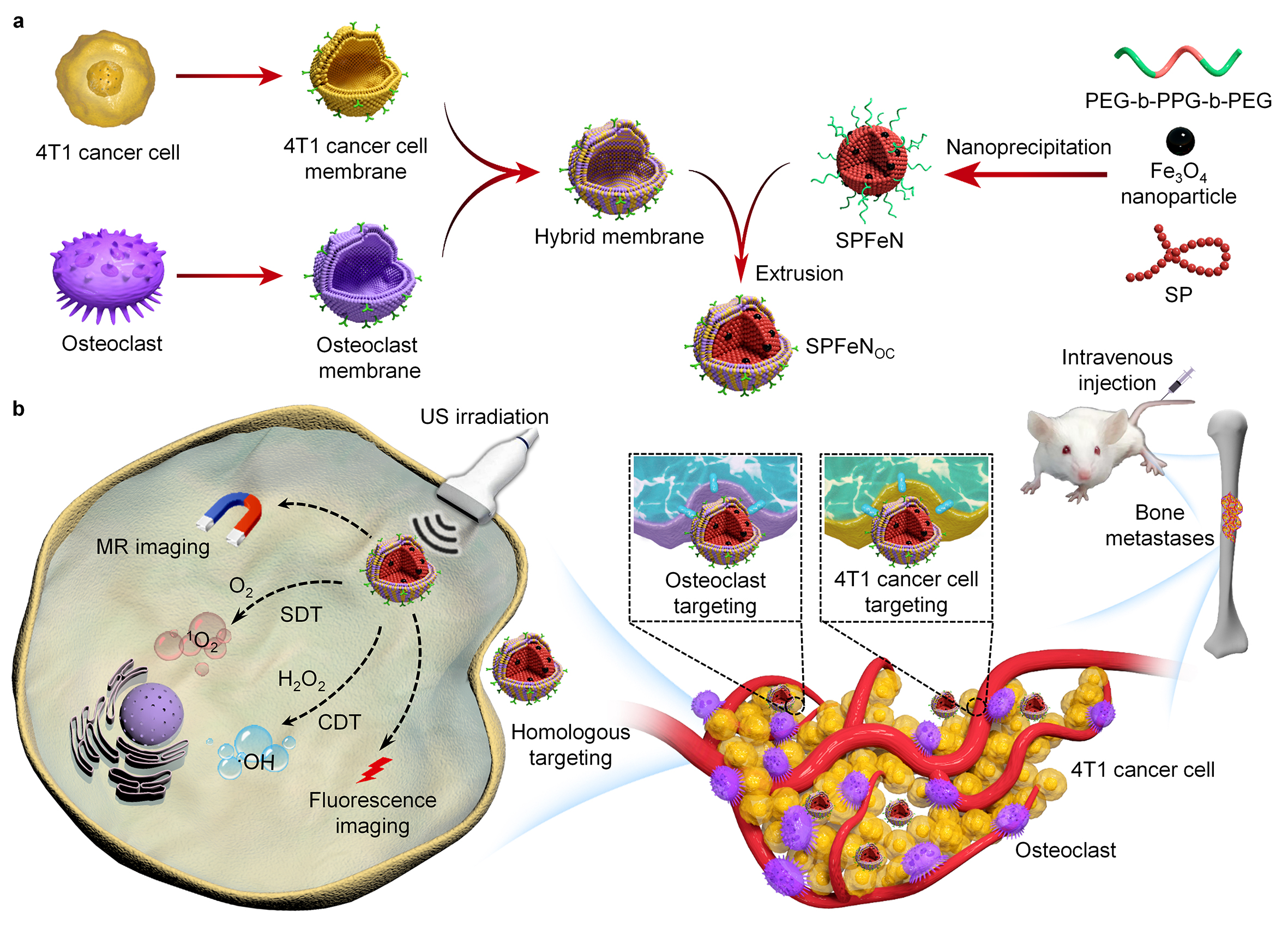The team led by Li Jingchao in the College of Biological and Medical Engineering has long been engaged in the development of nanoplatforms and the integration of tumor diagnosis and treatment. In response to the vicious circle arising from tumor growth and osteoclast-mediated osteolysis at the site of bone metastasis, the team has recently developed a dual-targeting biomimetic nanocomposite for enhanced diagnosis and treatment of bone metastases. This nanocomposite consists of a hybridized cell membrane formed by cancer cells and osteoclasts on the surface and iron oxide nanoparticles and semiconducting polymers on the interior. In the bloodstream, this nanocomposite can efficiently gather at the metastatic tumor site through homologous targeting mediated by membrane proteins. In the tumor microenvironment and under ultrasound irradiation, the semiconductor polymers and iron oxide nanoparticles not only enable magnetic resonance and fluorescence dual-mode imaging for the detection of osteoclasts and cancer cells but also facilitate combined therapy using acoustic and chemical forces. Meanwhile, this approach makes possible the simultaneous elimination of cancer cells and osteoclasts, inhibits tumor growth, and alleviates the osteolysis.
This nanocomposite comes with notable advantages, including: the use of hybrid cell membrane coating to prolong its circulation time in the bloodstream, to realize simultaneous targeting of osteoclasts and cancer cells, and intensify its accumulation at the tumor site; the use of magnetic resonance and fluorescence dual-mode imaging of the nanocomposite for simultaneous detection of osteoclasts and cancer cells, to achieve early and precise diagnosis of bone metastasis; and the combined effects of acoustic and chemical forces for synergistic therapy, to simultaneously kill tumor cells and inhibit the pro-growth effects of osteoclasts on tumor cells, disrupt the vicious circle between osteoclasts and tumor cells at the bone metastatic site, and improve the effectiveness of tumor treatment.

This research achievement was published in Angewandte Chemie, with our university as the first corresponding institution. Professor Li Jingchao from the College of Biological Science and Medical Engineering serves as the corresponding author, and Zhang Yijing, a master’s student, is the first author of the paper.


